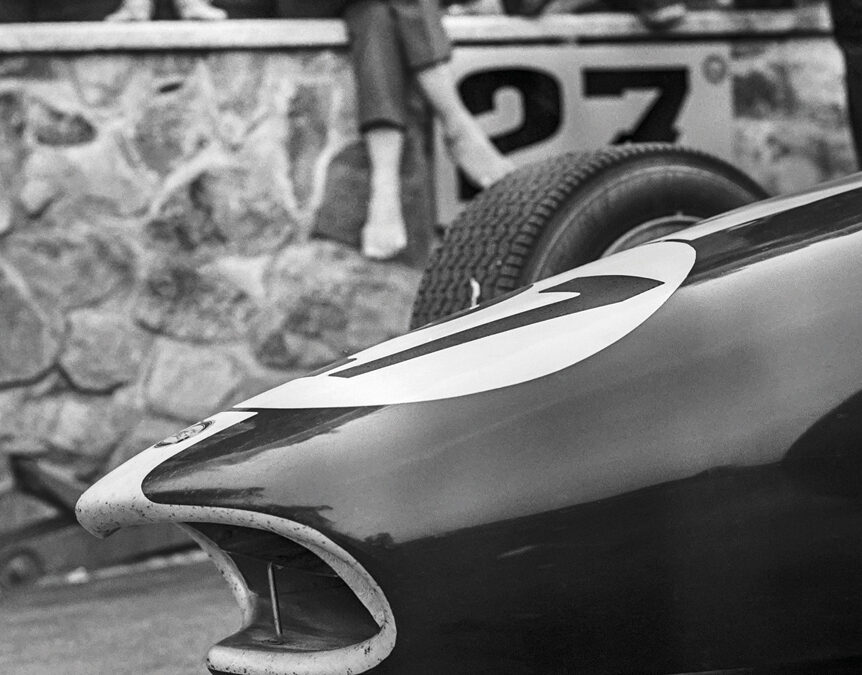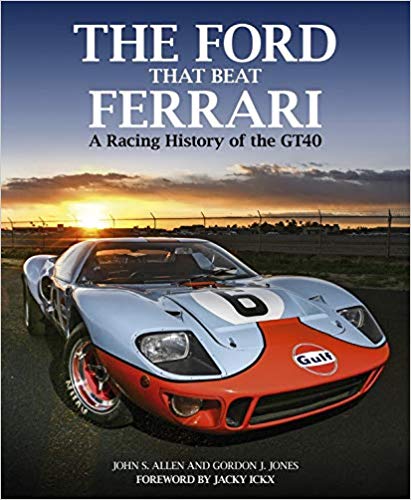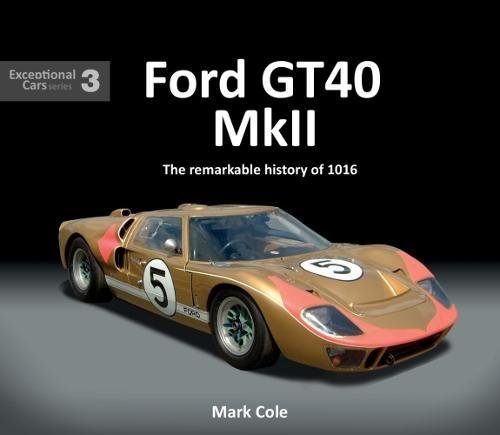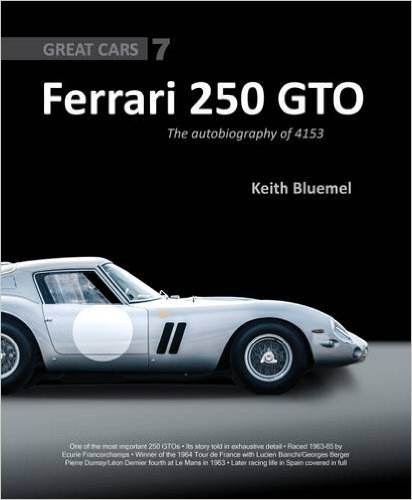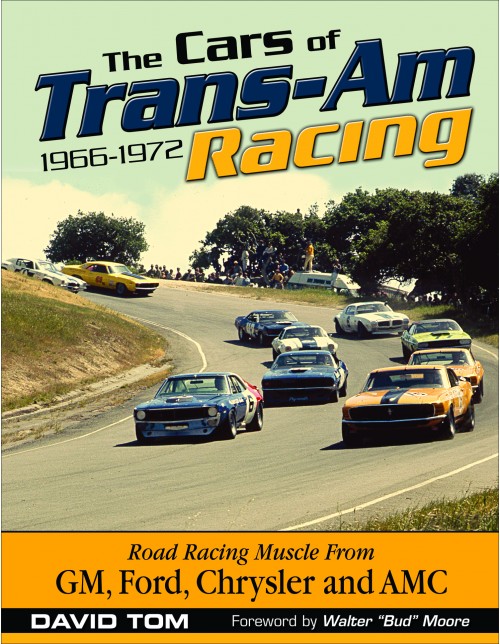
The legendary history of the pony car wars comes to life in this softcover edition of The Cars of Trans-Am Racing.
The SCCA Trans-Am Racing Series launched in 1966 and was designed to showcase a new class of sporty domestic cars racing on road courses. Each major automotive manufacturer participated heavily in the Trans-Am Series, and in a few short years, it became the ultimate American automobile showdown. When the modified muscle cars of the series were seen performing well on the country’s finest tracks, fans wanted a model of their own in the driveway. These “pony cars” boasted a new look and style not seen before, and their all-around performance eclipsed anything accomplished by production-based American GT cars up to that point.
This softcover edition of The Cars of Trans-Am Racing is unique in that it focuses on the cars used in this legendary series. These vintage Mustangs, Camaros, Challengers, Barracudas, Firebirds, Cougars, and Javelins all are extremely popular with collectors and enthusiasts today. Seeing them in their full-competition versions when they were new will bring back many fond memories for those who were fans of this series. In addition, enthusiasts who enjoy these cars today look to the Trans-Am Series cars for styling inspiration and performance hints as part of the growing Pro Touring trend.
Many of these historic cars have been restored to race-ready condition. Additional insight and interviews from the original builders and the teams that maintained the cars provide an insider’s viewpoint never before seen in print
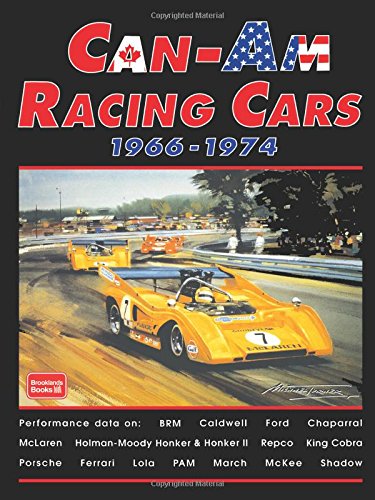
This Can-Am book takes a more detailed look at the wide variety of cars that contested the championship. In chronological order and rising in levels of performance, the machines examined range from the early Lola T70 to the incredible 1100 horsepower, 240mph Porsche 917 that swept all before it in the penultimate year of the Can-Am. McLaren cars dominated the series throughout its nine seasons and are also featured here extensively, but there are many other constructors represented, some less well known than others. Ferrari, Ford and Chaparral will be familiar to most enthusiasts, but how many recall that Brm built a Can-Am contender? Likewise, there was the ill fated Holman-Moody Honker Ii that thwarted even the undoubted ability of the great Mario Andretti to make it competitive and valiant attempts by McKee, Caldwell and the rest to build race winning cars. Aerodynamic innovation was also a major part of the typical Can-Am car, whether in the form of the wild looking Chaparral with its flipper rear wing or the air brakes tried on the Ferrari 612P, and these ideas (and many others) came under the microscope of the magazines of the day. The freedom of the Can-Am regulations gave rise to some truly unique vehicles that would dramatically influence the shape and style of motor racing around the world, long after the championship itself had passed into history. In these pages you’ll find track tests by well known drivers, comments from ground breaking designers like Bruce McLaren and inside information about the technicalities of the Can-Am have all been collated together to give a comprehensive contemporary overview of what went into producing those awesome Group 7 cars. This edition will be great reading for all enthusiasts of this exciting and legendary period of motorsport.
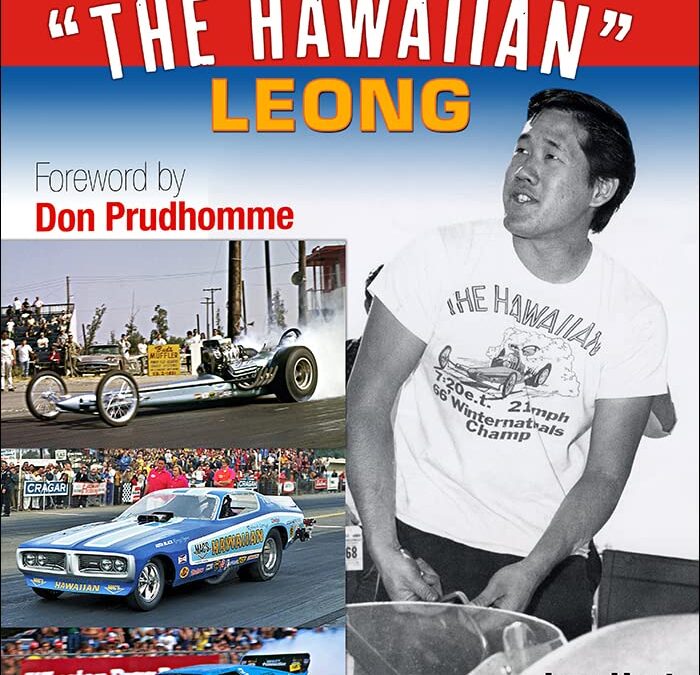
From racing the family Oldsmobile in 1960 to winning the Winternationals in 1964, read about the meteoric rise of drag racing’s greatest owner and tuner in the first-ever book about “The Hawaiian” Roland Leong.
As the son of a Harvard graduate, it could have been difficult for Roland Leong to live up to his family’s expectations. However, that wasn’t the case. “The Hawaiian” knew at a young age that drag racing was his career path. His supportive mother, Teddy, saw potential in Roland and bought him a new 1962 Corvette for “educational” purposes, such as wrenching and tuning. From there, it didn’t take long for the world to discover Oahu’s best-kept secret in drag racing.
In 1964, less than two years after reaching the mainland, Roland was in victory lane at the Winternationals in Top Gas Eliminator. The following year, with Don Prudhomme behind the wheel, “The Hawaiian” immortalized his place in drag racing forever with wins in NHRA’s Top Fuel Eliminator at Pomona (Winternationals) and Indy (US Nationals). Leong became the first ever to capture those iconic crowns in a single season. For good measure, Roland repeated the achievement in 1966 with Mike Snively, showing the world that a Harvard education isn’t required to achieve greatness.
“The Hawaiian” Roland Leong: Drag Racing’s Iconic Owner & Tuner is a tale of family, friends, and forging a path that no other Chinese-Hawaiian before him had carved. Re-live his biggest wins and lasting friendships in this first-ever publication on drag racing’s first builder and tuner superstar, Roland Leong!

Many books have been written about the French racing team Matra, detailing the cars and the races it competed in, yet falling to divulge what really went on behind the scenes. One day the team was winning, the toast of France – the next it had vanished, gone without a trace.
I resolved to find out for myself. The story I uncovered was more complex, more surprising and more thrilling than I could have imagined. Little did I expect the destiny of Matra to be so interconnected with the stories of Alpine and Ligier, let alone a range of topics as diverse as the introduction of colour television, the fate of truck company Berliet, the consequences of wartime occupation, the rivalry between Simca, Citroën and Renault, illegal political party funding, the films of Jean-Luc Godard, unfathomable goings-on at the FIA (motor sport’s governing body), the beginnings of the European Economic Community, the unsavoury activities of the French security services, the influence of the ENA, the significance of the cars used by the Gendarmerie, the dirigiste economy, ministerial corruption, unsolved murders, attempted assassinations – and lots of motor racing. But we are getting ahead of ourselves…
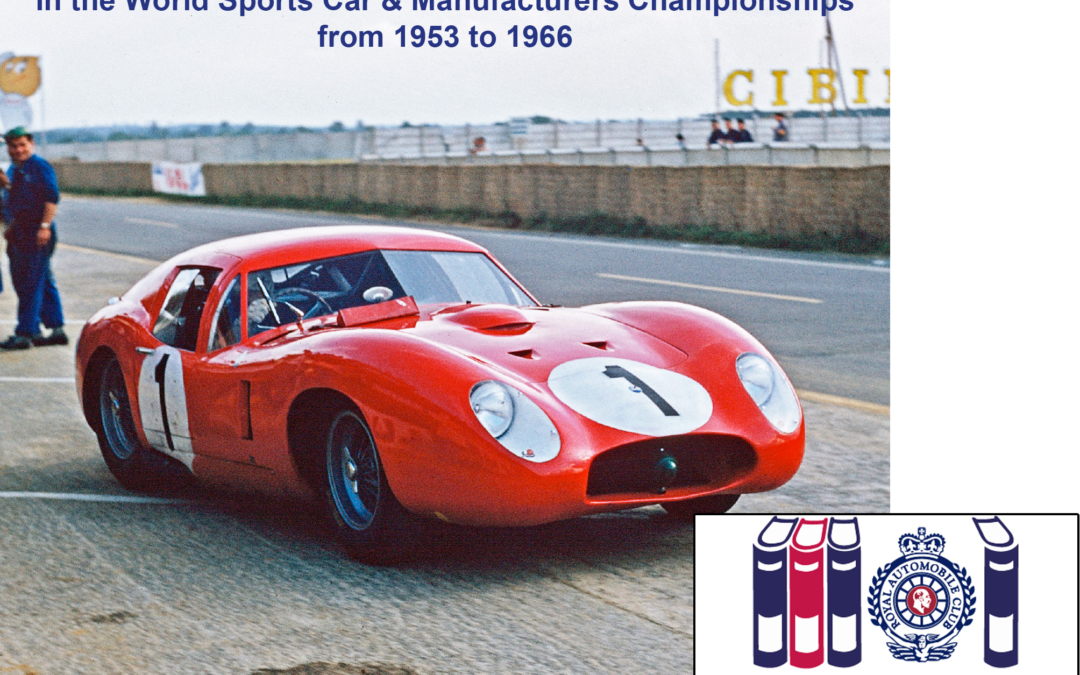
Limited to only 600 copies, this book reviews the history of the Maseratis in sports car racing from 1953 to 1966. All chassis numbers are listed and each car in featured on the – mainly previously unseen – images.
Format: 27 x 31 cm, Hardcover
Pages: 440
Images: 384
Language: English
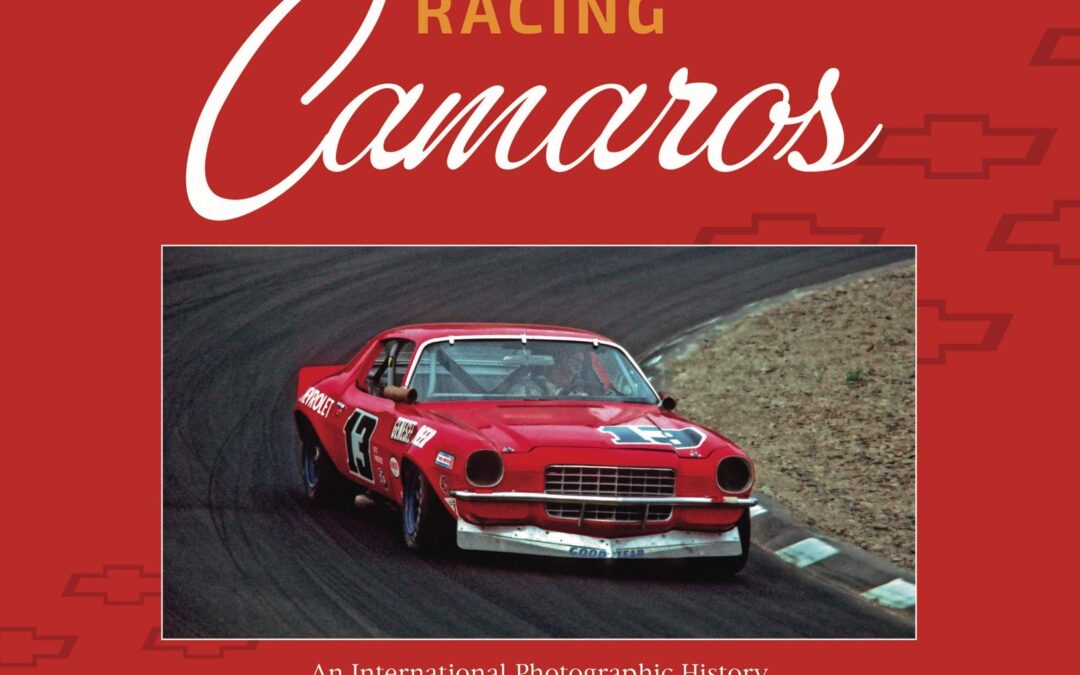
Chevrolet created the Camaro in response to the runaway sales success of the Ford Mustang, the first pony car. The Mustang went on sale in April 1964, and by August that same year, General Motors launched an intensive program to bring its own pony car to market. In September 1966, the Camaro went on sale.
Chevrolet wanted the Camaro to be better than the Mustang in every area, including style, ride-quality, and performance. To that end, with the Mustang having already achieved so much racing success, Chevrolet wanted to beat it on the track also.
Racing Camaros: An International Photographic History 1966 – 1986 is a photographic celebration of road racing Camaros throughout the world. It focuses on production-based cars, rather than the heavily modified tube-frame silhouette machines that began appearing in the late 1970s. Included are images of big-budget factory-supported cars competing in the Trans-Am series, right through to low-buck independents, and cars competing throughout the world.
For the first time, the international road racing representation of the Camaro is featured in a book, which includes countless photos that have never been published. Technical detail is provided throughout, from concept and design, right through its racing career, and the challenges and developments that took place to make it a winner. Only period images have been used. This is a true photographic history depicting the global popularity of the Chevrolet Camaro as a road racing car.
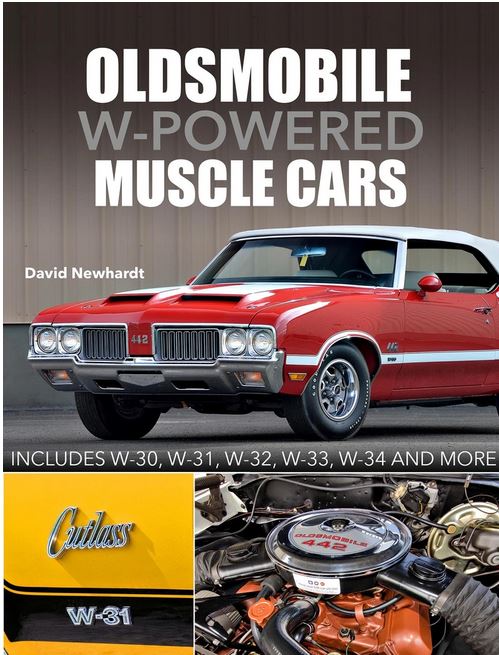
Relive Oldsmobile’s most potent muscle car offerings when the simple letter W intimidated all takers.
Oldsmobile’s foray into the developing muscle car wars of the 1960s came as little surprise to most in the automotive industry. What was surprising was that it wasn’t the first to develop it! Oldsmobile’s Rocket 88 has been viewed by some as the beginning of performance offerings from automobile manufacturers. The 4-4-2 was Oldsmobile’s volley back at the Pontiac GTO, and in 1966, Olds attempted to spike the ball home with its all-new W-30 high-performance drag racing package.
During the course of the next pair of decades, Oldsmobile offered the W-code on a host of platforms (the Cutlass, F-85, 4-4-2, Toronado, and Delta 88) with an assortment of engine packages (400, 455, and 350). As muscle cars fell by the wayside during the struggling 1970s, Oldsmobile continued to carry its flagship W-30 all the way through the 1980 model year.
This book by muscle car historian and esteemed photographer David Newhardt revisits and celebrates Oldsmobile’s legendary W-optioned performance machines. So, sit down, strap in, and let Dr. Oldsmobile do the driving.
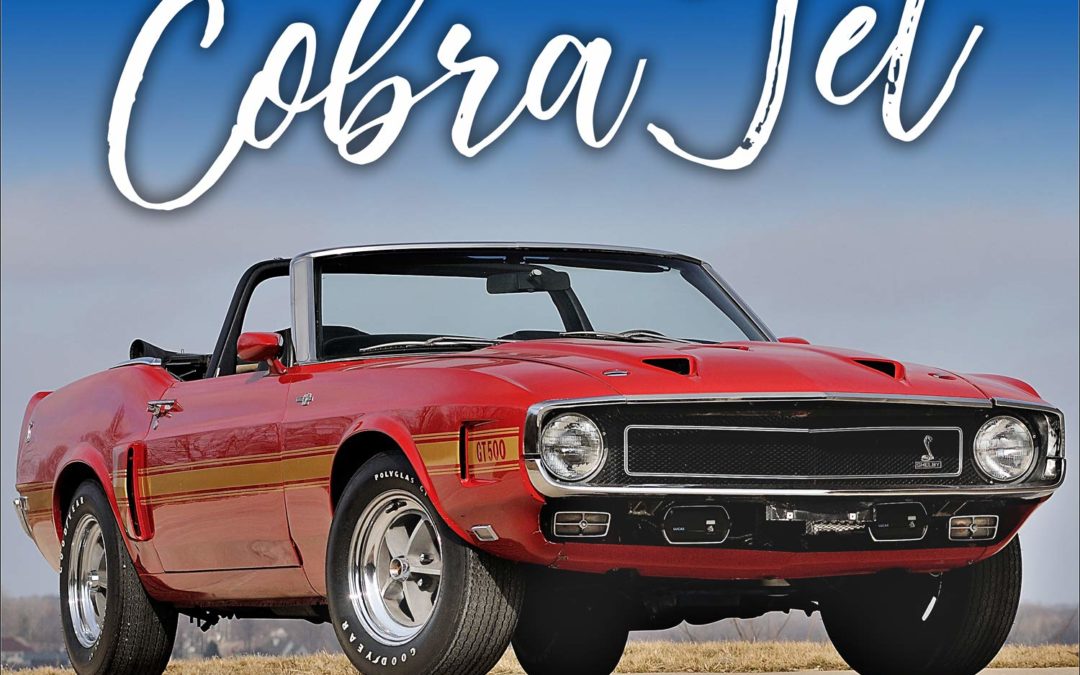
SIGNED
Relive Ford’s glory days in the muscle car era in this stunning new volume covering the popular and powerful Cobra Jets!
Ford’s “Total Performance” racing program in the early 1960s was the first stone turned in the task of repurposing its image to the youth market. The introduction of the Mustang increased that exponentially, but even in 289 Hi-Po form it was no match for the Pontiac GTO or other muscle cars. Neither was the 1966 Fairlane GT or subsequent 390 Mustang the following year. But when the 428 Cobra Jet Mustang debuted at Pomona for the NHRA Winternationals in 1968, that image evolved from wholesome to fearsome!
Cobra Jet Mustangs downed all comers and took the vaunted Super Stock Eliminator crown while introducing a new weapon under the hood to serve as fair warning to what was to be uncoiled at the stoplight. By the next model year with the revolutionary shaker hood on Cobra Jet-equipped Mach Is and the striking snake adorning the sheet metal of the midsize Cobra, Ford’s image makeover was complete.
The demise of the muscle car era didn’t signify the end of the Cobra Jet, as Ford continued the performance reign with the 351 Cobra Jet. The legacy left by Mustang, Cougar, Torino, Cyclone, and Ranchero 428, 429, and 351 Cobra Jet-powered vehicles is indelible. Mustang Monthly editor Rob Kinnan and muscle car expert Diego Rosenberg bring this history back to life in an all-encompassing book that is the first to specifically feature all Cobra Jet cars, including the purpose-built drag cars of today! Cobra Jet: The History of Ford’s Greatest High Performance Cars will hypnotize you as the first and complete history of Ford’s most famous engines during the era’s peak.
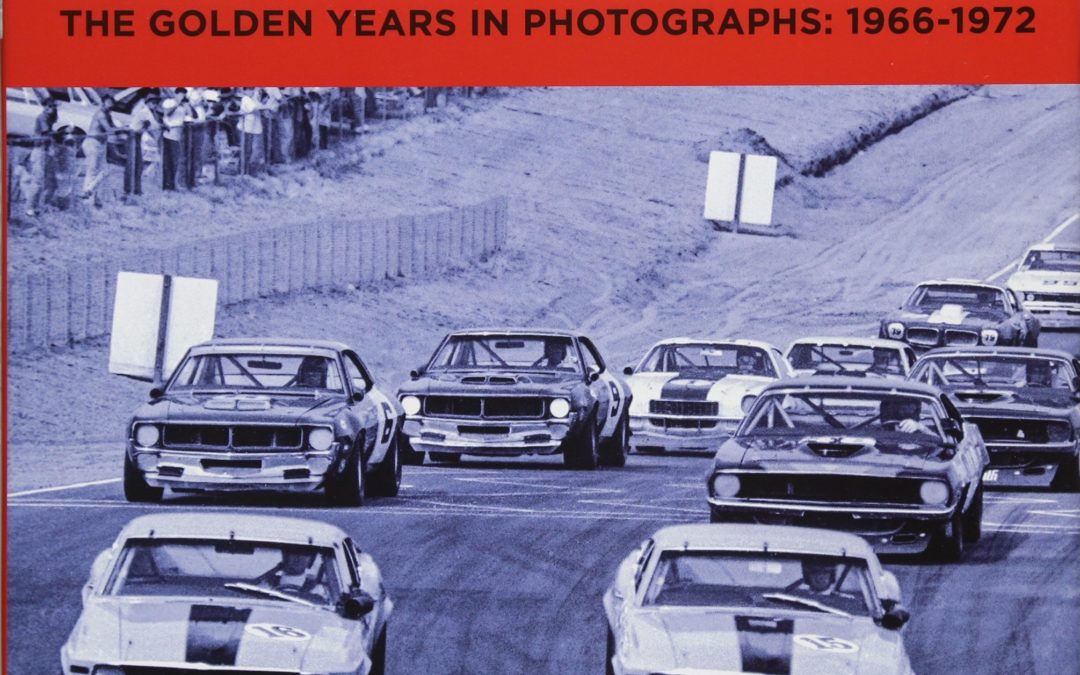
Fifty years later, racing fans still talk about the original Trans-American Sedan championship, better known as the Trans-Am. For seven seasons, the series pitted a new generation of American “pony cars”—led by the Ford Mustang and Chevrolet Camaro—in closely fought racing at top road circuits across North America. The driving talent ranged from technically sophisticated sports-car driver Mark Donohue to Indy 500 winner Parnelli Jones and all-around driving aces Dan Gurney and Peter Revson.
Trans-Am Era: The Golden Years in Photographs, 1966-1972 recaptures the speed, intensity, and intrigue of the Trans-Am through hundreds of vintage photographs, most of which have never before been published and include rare color images. The focus is on the iconic over two-liter cars that attracted the most attention from fans and support from Detroit—the Mustang, Camaro, Pontiac Firebird, AMC Javelin, and Dodge Challengers that are still instantly recognizable today.
At its peak in 1970, the Trans-Am series featured teams backed by Ford, General Motors, Chrysler, and American Motors. With money, marketing, and prestige on the line, the competition was intense, both on the track and behind the scenes. Sheet metal and paint were shredded, while rules were stretched to the limits as teams dug into an ever-growing bag of technical tricks to produce more power and performance.
Along with its vivid images, Trans-Am Era offers detailed captions and year-by- year season summaries that chronicle the Trans-Am’s gradual rise and sudden fall. Author Daniel Lipetz conducted years of research that sheds new light on the series and uncovers previously unknown facts about individual cars, races, and drivers.
All of the great Trans-Am cars are here: the Camaro Z28s that won two titles for Mark Donohue and Roger Penske; the Boss 302 Mustangs that Parnelli Jones drove to victory in 1970; and the AMC Javelins that Donohue and Penske would take from also-rans to champions in 1971. And all the drivers who made the series famous are profiled. Along with champions Donohue, Jones, and George Follmer, there are greats like Dan Gurney, Sam Posey, Peter Revson, Jim Hall, Swede Savage, and Jerry Titus and even cameo players like Indy 500 legend A. J. Foyt and endurance-racing hero Vic Elford.
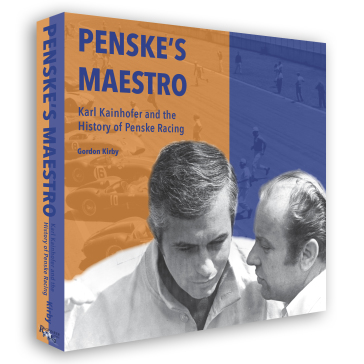
Karl Kainhofer, an Austrian-born Porsche-trained master mechanic, was Roger Penske’s personal race mechanic, preparing many of the cars Penske raced in the late nineteen-fifties and early sixties. When Penske started the Penske Racing organization in 1966 Kainhofer was the first man he hired as a full-time employee, and over the following ten years Kainhofer became chief mechanic for Mark Donohue’s Can-Am, Formula 5000 cars, Indy cars and Formula 1 cars.
After Donohue’s tragic death at the Austrian GP in 1975 Kainhofer started a second career as the boss of Penske’s engine shop. Over the following twenty-two years he was Penske’s chief engine man, before retiring at the end of 1997, after thirty-two years with Penske Racing. Through a career that spanned 40 years from 1958 through 1997 Kainhofer scored a remarkable 170 wins from 535 races, including 22 with Donohue in the USRRC, Can-Am and Indy cars, plus 94 wins, nine Indy 500s included, as the chief engine builder for Penske’s Indy cars from 1977 through 1997.
In researching and writing ‘Penske’s Maestro’ veteran American racing writer and award-winning author Gordon Kirby interviewed more than sixty people who worked with Kainhofer at Penske Racing over the years. Hence the book relates not only Karl’s life history but also the inside story of Penske Racing’s first 32 years. ‘Penske’s Maestro’ includes more than 400 photos plus a complete statistical record of Kainhofer’s amazing career. Fully Indexed.
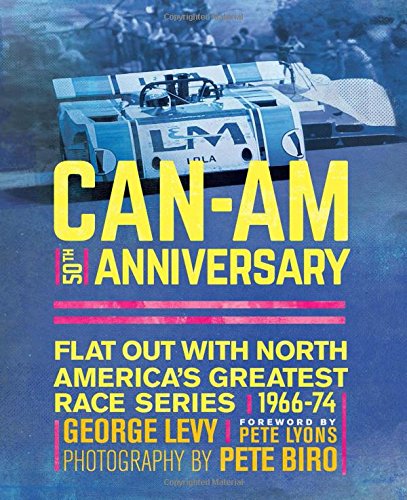
SOLD OUT
COLLECTOR’S LIMITED EDITION OF 300 SIGNED SLIPCASE BOOKS
Forget the rule book and relive one of the most exciting race series ever with Can-Am 50th Anniversary!
The first rule of Can-Am: There are no rules. Or at least damn few rules. The bodywork had to enclose the wheels and there had to be something that loosely resembled a passenger seat–if your passenger was a badly misshapen human or perhaps a lab monkey. Otherwise, set your racing mind free. No limits to engine options or output, no restrictions on aerodynamic aids or body shape. It was as close to unrestricted road racing as racing had ever gotten or would ever get again. And it was fantastic.
From its introduction in 1966 to the end of its classic period in 1974, North America’s Can-Am series was the most exciting, technologically advanced, and star-studded racing series of the day. Its essentially rules-free formula attracted everyone from crazed backyard engineers to specialists like McLaren, Chaparral, Shadow, and Lola to manufacturers like Ford, Ferrari, Chevrolet, and Porsche. Top drivers including Mario Andretti, Jackie Stewart, Parnelli Jones, Bruce McLaren, Denis Hulme, Dan Gurney, Phil Hill, Mark Donohue, Peter Revson, Jim Hall, Jody Scheckter, Chris Amon, George Follmer and John Surtees competed on tracks across the US and Canada taking time off from Formula One schedules and other duties to drive in Can-Am because the racing and the cars were so exciting.
Can-Am 50th Anniversary offers a heavily illustrated look back at what is arguably the greatest race series ever to grace the roadracing circuits of North America. Photographer Pete Biro was Goodyear Tire’s official photographer and followed the series throughout the entire run from 1966-’74. The vast majority of the book’s images are unpublished or long out of circulation. Biro brings his unique perspective and his close relationship with the drivers, team owners, and constructors to bear on the captions while former AutoWeek editor George Levy provides an exciting text reflecting the thrill of Can-Am racing.
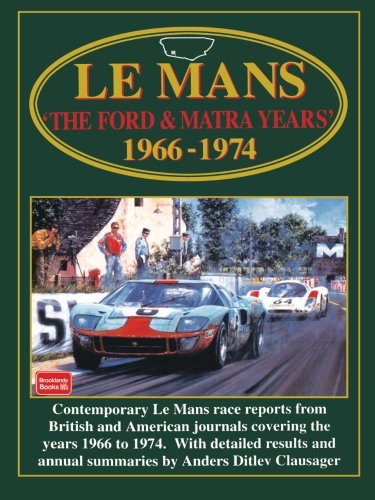
This volume covers post-war stories from Le Mans from 1966 through 1974. During these years Ford won four years in succession with the Gt40, followed by Porsche 917 in 1970 and 1971 and Matra-Simca took the final three years honours. Annual race summaries and detailed results are by Anders Clausager. This Le Mans history, so evocative because the reports of this famous 24-hour race are on-the-spot, topical accounts published in the leading motor journals at the time each race was recently concluded, and include the exciting period when, for a full 24 hours, racing was at the pitch of that in other formulae, with speeds of those pure racing cars, more or less, reaching some 200 mph down the long Mulsanne straight.
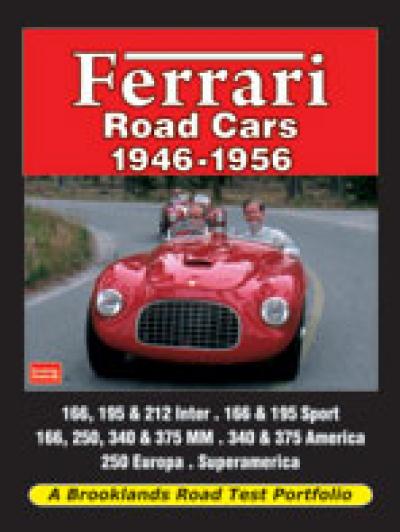
“An in-depth reference book compiled from multiple sources, these incredibly focused portfolios contain a wealth of information for the collector, restorer or enthusiast. As much of the mystique of the Ferrari marque is associated with its racing successes, it is more usual for authors and publishers to document Ferrari’s racing successes while the road-going automobiles are rarely given any consideration. However, the road cars constructed between 1946 and 1956 played a significant part in Ferrari’s growth and development during those formative years and this portfolio traces the history of those iconic cars.
Brooklands Books UK has dug into their archives and compiled a wonderful assembly of documentation for the early road cars. Road tests and track tests written by extremely knowledgeable authors, historians and drivers such as Phil Hill, Peter Coltrin, Warren Fitzgerald, John Bentley, Michael Bowler, Hans Tanner, and Dean Batchelor to name just a few and in no significant order! However, the demarcation between the race cars and the early road cars is often blurred, as many of the cars that were constructed during that era had dual personalities and many of the so-called road cars were nothing more than thinly disguised race cars. Therefore, while the intention of this book is to focus on the true road-going Ferraris manufactured from 1946 to 1966, the reader has to accept that there will be some gray areas.
”
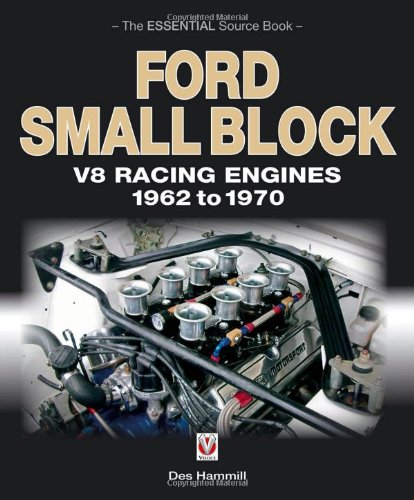
This is the story of the Ford small block Fairlane V8 engine’s rapid evolution from passenger car engine to highly successful racing engine and the victories it fueled for years afterwards. Initially, in May 1960, a team of nine engineers, lead by George Stirrat, designed a lightweight, all cast-iron, compact, reliable and durable power-plant for passenger cars, but following its introduction in July 1961, Ford’s engineers quickly realized its potential benefits if modified for racing applications. Within three months, the capacity had been increased from 221ci to 260ci, and by early 1962 Carroll Shelby had fitted a High Performance 260ci version in his AC Cobra. Subsequently, the original design team began work on a second capacity increase, to achieve a High Performance 289ci unit; within three months the standard 289ci became available. Carroll Shelby went on to win the 1965 World Sports Car Championship using a HP-289ci. Aluminium block and cylinder head pushrod versions, designed in late 1962, had been constructed by early 1963, in preparation for that year’s Indianapolis 500, and the DOHC four-valve per cylinder 255ci raced in the 1964 and 1965 Indy 500, winning the latter outright. The 302ci replaced the 289ci for the 1968 car model year and, at Le Mans in 1968 and 1969, GT40 cars won outright using this variant of the small block. In 1965, 1966 and 1967, HP-289ci-powered Mustangs won the SCCA B-Production Championship and 1966 and 1967 Trans-Am Championships. A Bud Moore Engineering Boss 302 Mustang won the 1970 Trans-Am Championship. Ford invested much time and expertise into its racing activities in the 1960s, and there’s little doubt that the V8 Small Block engines took the company to the forefront of the racing world, until it withdrew from the sport in 1970.
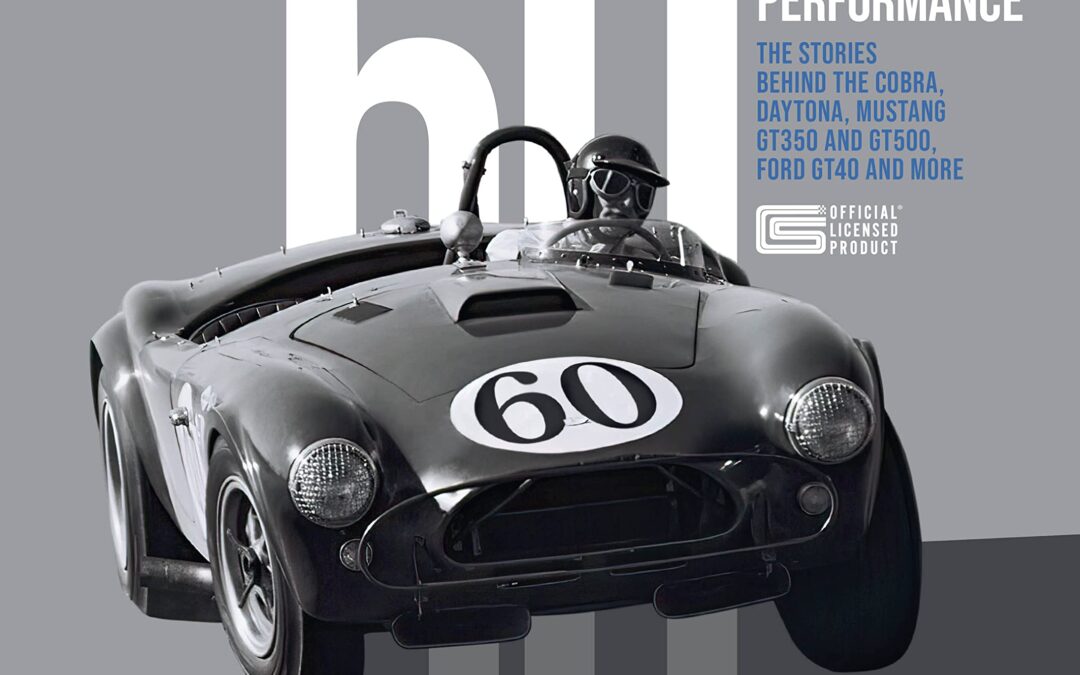
Six Decades of Shelby performance—from the first Shelby AC Cobra to today’s Mustang Shelby GT500!
A bad heart forced Carroll Shelby, one of the top racing drivers of all time, to retire in 1960. But that didn’t stop the lanky Texan from continuing to make history. He launched Shelby American in 1962 with the creation of the brilliant Ford-powered AC Cobra, soon to dominate both U.S. and international sports car racing. Shelby’s winning ways soon led to Ford seeking Shelby’s team of “hot rodders” help to make the Ford GT program a success. It worked. Shelby and Ford soon stunned the motorsports world by winning Le Mans and dominating other venues from 1966 to 1969 with the GT40. Fifty-three years later the legendary first Le Mans win of 1966 would form the basis for the acclaimed film Ford Versus Ferrari. As if the Cobra, Daytona Coupe, and GT40 were not enough, this small team of hot rodders, fabricators, and race mechanics also created the Shelby Mustang GT350 in 1965, and the GT500 two years later. Shelby American was nothing short of lightning in a bottle from 1962-1970.
Shelby American 60 Years of High Performance covers all of these early triumphs, following the proceedings from a small shop in Venice, California, to sprawling digs at LAX all the while developing new road cars, running a top race team, and giving privateer racers the cars they needed to win. Get to know Shelby, as well as the innovators who surrounded him, including designer Peter Brock, genius engineer Phil Remington, “Mr. GT350” Chuck Cantwell, and a roster of top drivers that included Ken Miles, Bob Bondurant, Dan Gurney, Bruce McLaren, Denny Hulme, A.J. Foyt, Mario Andretti, and more.
Authors Colin Comer and Rick Kopec, leading Shelby historians, follow the Shelby story through Carroll’s post-Ford relationship with Dodge, including his roles in the giant-killing, pocket-rocket Shelby Charger, GLH (“Goes Like Hell”), and GLH-S cars along with a slew of other Shelby-ized machines including his role in the birth and development of the menacing Dodge Viper.
The story of the late Carroll Shelby and the company he founded is a classic tale of ingenuity, grit, and perseverance. Illustrated throughout with rare period imagery and modern color photography, Shelby American 60 Years of High Performance is the ultimate tribute to Shelby American and the team that made it all happen.
